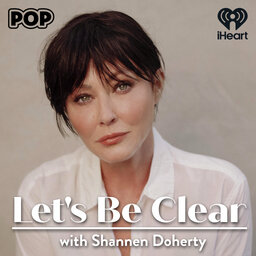Let's Get Real About Our Bodies...with Emme
Model, mogul, and cancer thriver Emme brings her truth to 'Let's Be Clear.'Her early advocacy for full-figured body types led the fashion industry to design more clothing options for women of all sizes.In this episode, the trailblazing model shares what got her through a cancer diagnosis, her approach to dating, and how the words "shut up and meditate" changed her life!
 Let's Be Clear with Shannen Doherty
Let's Be Clear with Shannen Doherty


